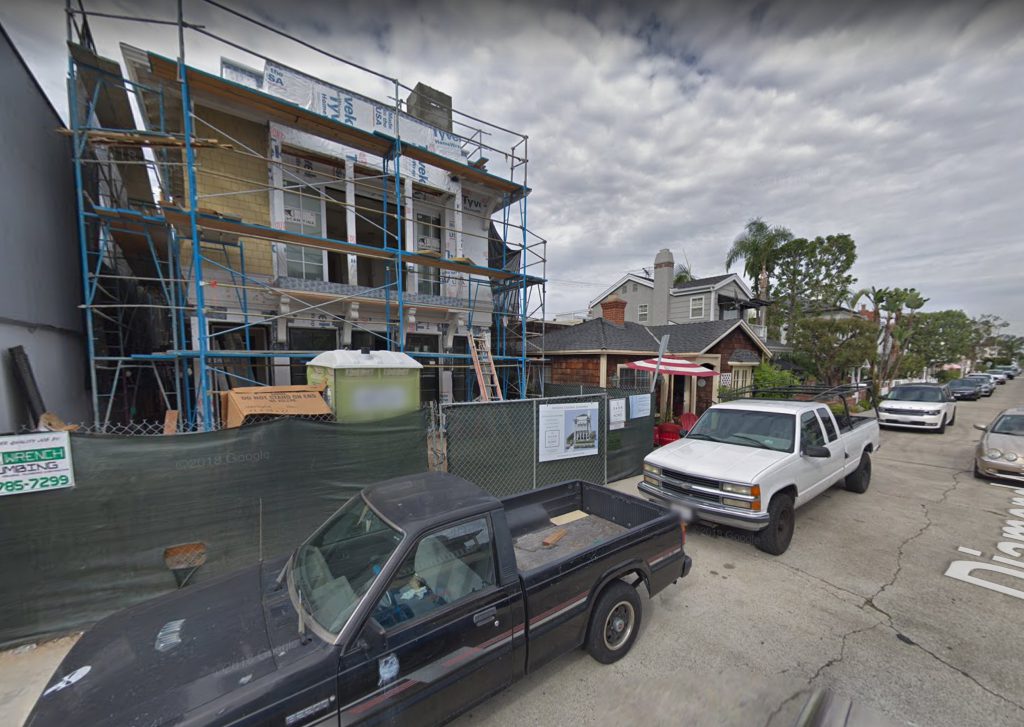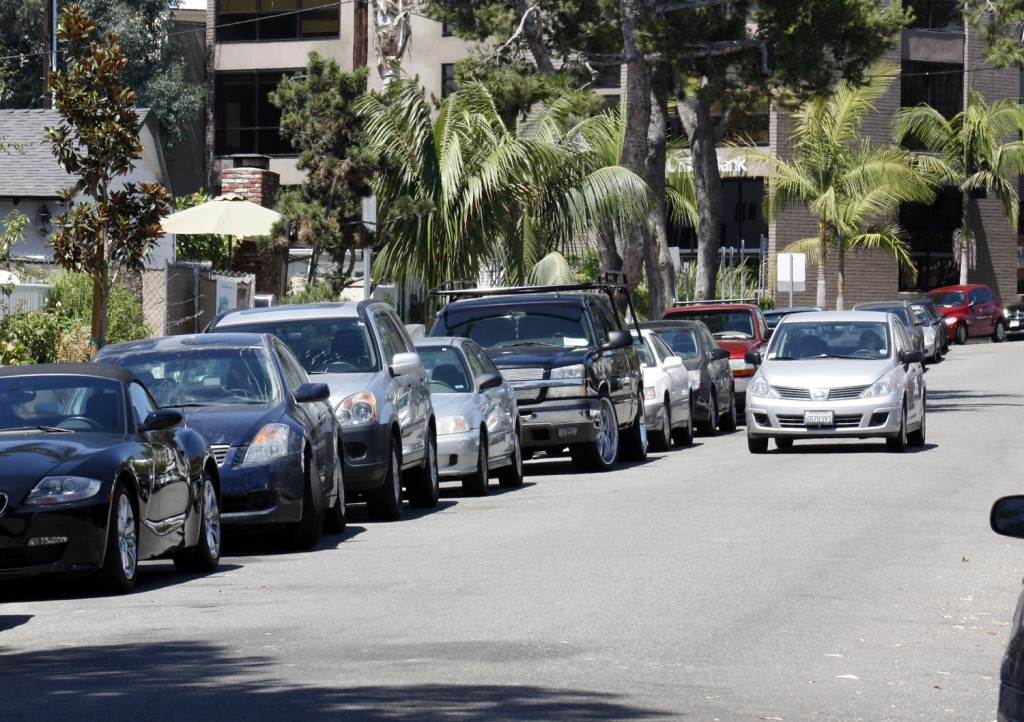
— Google Maps image
The differences between the various communities in Newport Beach was the focus of a discussion this week about a proposed code amendment related to the on-street parking impacts due to construction activity in residential neighborhoods.
During their Tuesday meeting, City Council unanimously agreed to table the item, and directed staff to conduct more community outreach and return with revisions.
Mayor Pro Tem Will O’Neill made the motion, which included splitting them item into two separate proposals.
The first will focus on setting a timeline for construction projects, which most Council members agreed should be either three or five years, city-wide. It will likely return at the next meeting.
The second will concentrate on the remaining details, including specific restrictions (like noise limitations on Saturdays between Memorial Day and Labor Day), signage with construction information, parking management plans, and more. Council directed staff to gather more community feedback and focus on tailoring the amendment so it works for the neighborhoods that need it and doesn’t burden the communities that don’t. It should return at a study session at the end of April.
Certain neighborhoods, like many gated HOAs in Newport Beach, have their own parking rules which builders have to comply with and that already address potential issues during construction, O’Neill pointed out.
Also, some neighborhoods are so spread out that parking during construction is not a challenge, he added. Building and parking in Newport Coast is very different compared to Balboa Island or Peninsula, or Corona del Mar, several Council members agreed.
“We’re doing kind of a ‘one shot fits all’ approach,” that doesn’t make a lot of sense in every neighborhood in the city, O’Neill said. “There’s a large group of the city that just doesn’t need this and I don’t want to add that additional burden.”
They did leave language in the ordinance to allow for some flexibility from the staff standpoint, noted Community Development Director Seimone Jurjis. Also, each parking management plan from the developer is going to have to stand on its own as appropriate for the area where the construction is located, he added.
It needs to be more specific about what areas are asking for it and how to actually implement it, added Councilwoman Joy Brenner, whose district covers CdM, Cameo Shores, and Pelican Hill.
“Some of us in our neighborhoods have serious problems and others don’t,” Brenner said.

— NB Indy file photo
She suggested presenting it to various resident associations or groups for feedback. There needs to be more talk with the community in the most impacted areas in order to come up with a manageable plan in those specific neighborhoods where solutions are needed, Brenner commented.
O’Neill commented that he didn’t want any of the recommended restrictions to apply to his district, which covers most of Newport Coast, apart from the three- or five-year time limit, which several Council members agreed should be city-wide.
Most Council members leaned toward a three-year timeline, but there was some discussion if five years was a little more flexible. Council directed staff to single out the timeline component and bring back a recommendation at the next meeting.
Tuesday’s proposal noted that projects with “special circumstances” may request an extension. Jurjis said the timeline was trying to consider bigger commercial projects.
Marshall “Duffy” Duffield commented that five years to build a house is a “long, long time.” Even three years is long, he added.
It depends on the project, as several pointed out on Tuesday. Lido House Hotel opened about two years after breaking ground on the Balboa Peninsula property. Yet, a few Council members mentioned residential projects in their districts that have been ongoing for well over five years.
A few Council members pointed out that builders can hammer one nail in, update their permit, and keep the project going.
Nearly every neighborhood has a house like that, where construction seems to continue endlessly, Councilman Brad Avery noted.
Everyone wants to get construction done as soon as possible, but the reality is often different, Avery commented. After three or five years, is the city going to subjugate against somebody who is in a financial bind and can’t finish their house or is doing it themselves, he asked.
“Ultimately, what can the city do?” he said. “Obviously they’re in pain over it as well, so it’s a tough situation.”
Looking at the average life of a project, most are constructed within about two or three years, depending on the complexity of the project, said Deputy Community Development Director Samir Ghosn. In a “reasonable world,” most projects could be completed between 10 and 14 months, he added.
The five- or three-year time limit will begin for all existing projects from the effective date of the new ordinance, City Attorney Aaron Harp confirmed.
Based on prior public outreach, staff found that residents were concerned about a lack of parking enforcement, inadequate notification and communication from developers, poor noise control, and delayed project timelines.
A key concern was that “builders have no consideration for the neighbors,” according to staff.
Public speakers were mostly supportive of the proposal, with some concerns about improving enforcement and customizing the plan to better fit the different neighborhoods in the city.
Although one speaker, a longtime local contractor, opposed the plan altogether, saying, “this whole thing sucks.”




